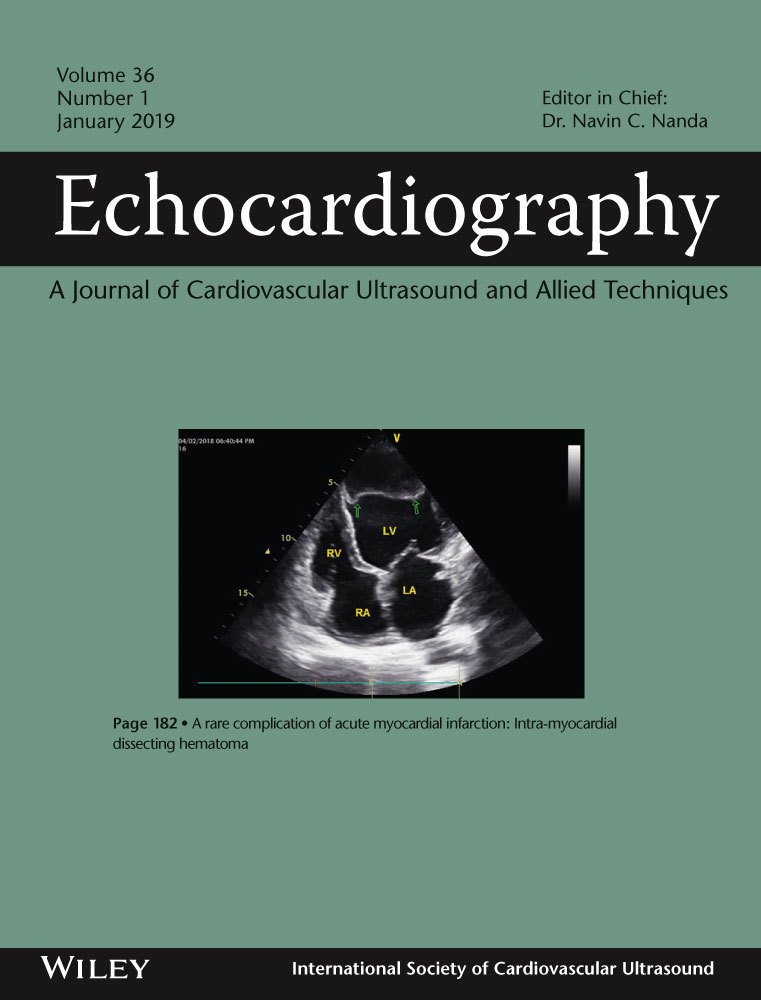Pulmonary transit time from contrast echocardiography and cardiac magnetic resonance imaging: Comparison between modalities and the impact of region of interest characteristics
Funding information
Supported by an investigator-initiated grant (KM) from GE Healthcare.
Abstract
Introduction
The degree of correlation of pulmonary transit time (PTT) between contrast echocardiography and cardiac magnetic resonance imaging (MRI) across the spectrum of cardiac disease has not been quantified. In addition, the degree to which PTT estimates are affected by variation in location and size of regions of interest (ROI) is unknown.
Methods
Pulmonary transit time was obtained using an inflection point technique from individuals that underwent contrast echocardiography and cardiac MRI. Right ventricular, left atrial, and left ventricular ROIs were evaluated, and two sizes for each ROI were used. The Spearman correlation coefficient and Bland–Altman analysis were used for comparisons between modalities. Bland–Altman plots were also used to measure the impact of ROI size and location on transit times.
Results
Fourteen participants (age: 27–64 years; LV ejection fraction: 30%–60%) underwent both studies a median of 1 week apart. The correlation between modalities was significant for PTT (r = 0.65; P = 0.01) and normalized PTT (r = 0.80; P = 0.001). Cardiac MRI yielded transit times consistently higher than contrast echocardiography (bias ~ 1.4 seconds), but the discordance was not dependent on transit time magnitude. Low bias was observed for comparisons of ROI size and location (<0.5 seconds).
Conclusions
Contrast echocardiography underestimates transit time measurements obtained by cardiac MRI, although the discrepancy was systematic and may have been contributed to by the interval between imaging studies. ROI location and size did not impact transit time values, suggesting that ROIs could be placed without intensive training, a step toward incorporation of real-time PTT measurement into echocardiographic laboratory workflow.




